Chapters
Preliminary 1. Histories of the Book and Literacy Technologies
Preliminary 2. Bibliographical Alterities
3. Literacy in the Ancient World
4. The Middle Ages in the West and East
5. The Invention and Spread of Printing
6. Controversies and Controls
8. Politics and the Public Sphere
Chapter 6. Controversies and Controls
Religious struggles, censorship, and colonial expansion
The perceived power of printed materials provoked strategies for control in response. Questions arose about who had authority over print and how it should be regulated. Censorship and control take many forms, and can be applied at any point in the lifecycle of production and reception of a text. They can also be used to repress persons as well as objects. Every possible means of control has been exercised at some point in the history of print—some of which, like book burning and attacks on authors—had been used in manuscript cultures as well. But the threat of printed material required new strategies since the sheer number of copies of a work increased the chances it could circulate materials subversive to the status quo or threaten the authority of whoever was in a position of power. The dynamic power of print was also felt in the effects of colonial expansion. The exploration of the New World, as well as establishment of other colonies in Africa, India, China was also frequently accompanied by the arrival and use of printing presses. Sometimes this was for administrative purposes, but, generally, given the religious distinctions between populations in Western Europe and the zones they colonized, printed matter was of a religious nature, meant to spread the Gospel and convert indigenous peoples to Christianity. But as a side effect of these many forms of coercion, advocates of free speech and others willing to push libel laws to protect expression began to create precedent on which some of these freedoms would be legally protected, at least in certain societies, in the centuries ahead.
Early censorship
The self-policing of publication was already in place well before the advent of printing. The professional guild of stationers, so-named because they “stationed” themselves in place around the cathedrals in the medieval towns, had a strong self-interest in controlling access to and production of texts and their copies.1 But with this privilege came responsibility and accountability as is evident in the licensing agreements of their trade. In England, the Stationers’ Company was officially established in 1403. But royal privilege had also been granted to stationers in Spain in 1265, for instance, by King Alfonso X in order to assure self-governance of the activity of copying.2 Prohibited texts were identified by Pope Gregory IX a few decades earlier, a favor returned to the Pope through expurgation of his own writings in the 16th century.3 And copies of the Talmud and Torah, sacred Jewish texts and commentaries, were confiscated and burned in the early 14th century, condemned as “perfidy” by Christian church and secular authorities.4
Heresy was the greatest charge on which censorship took place in the Middle Ages, but treasonous and seditious documents were also grounds for severe punishment. Confiscation of manuscripts, and destruction by fire, were common methods of removing objectionable material from use. In the context of the medieval universities, professional copyists were bound by an oath to produce accurate copies.5 But the fact that we still possess texts by figures considered heretics–Peter Abelard, John Wycliffe, and John Hus–makes clear that the suppression of their work was incomplete, at best. Systematic persecution on religious grounds included the destruction of sacred texts, and as the Spanish Inquisition gained strength beginning in 1478, with its combined motives of national unity, consolidation, and religious conformity, Jewish books and Arabic manuscripts were the object of attack.6 In 1490, many were burned in Granada in the public square. But similar examples can be found across cultures and historical periods.
Licensing, destruction, confiscation and alteration work effectively as controls, but so does the more insidious pre-publication self-censorship that comes as cultural practices institutionalize their threats. In some regards, the most effective censorship is that which erases the marks of its own activity, so that a text simply never appears to have existed. But in other circumstances providing exemplars of the consequences of heretical or seditious publication has a more chilling effect. Controls have also been used to limit the number of printing presses in use (in Tudor England), and access to materials (paper production was prohibited in the Spanish colonies in the New World).7
Less intuitive than these basic principles of censorship is the role of the physical appearance, translation, and commentary or lack thereof in Biblical texts. Format features, particularly marginalia, created controversies of a political as well as theological nature. Scholar Evelyn Tribble has constructed a clear history of the ways these struggles unfolded in the English context, beginning with the first translations of John Wycliff.8 The English context provides one case study for the struggle to control print, and other examples across a range of locations would offer different details for insight. The conditions in the contemporary United States are in part the legacy of the struggles in England, and thus are connected by some absorption of these precedents into current practice with regard to freedom of the press, libel laws, and intellectual property. Because of the global reach of the Catholic Church, its Index Prohibitorum is a worldwide mandate that has an influence beyond that of most other organized religions.9 The first Index was issued in 1559 by Pope Paul IV and the final one in 1948. Books included in the early Index were largely those with content considered heretical, such as Protestant tracts or works against the authority of the Pop or Church. Later Indexes came to include works that included magic, erotic materials, explicit or lewd language, alongside the traditionally banned works questioning the tenets of Catholic faith or challenging the authority of the Church.10 [Figure 1]
Sites of contestation and control: Bibles from Wycliff to King James
The story of the English Bible entangles secular politics with church power as well as struggles over fundamental beliefs about the way sacred texts should be understood and used.11 The first translation of the Bible into English occurred in the 14th century when John Wycliffe and his associates made a full translation of St. Jerome’s Latin Vulgate into Middle English.12 This combination of scholarship and politics led to trouble. The Oxford-educated Wycliffe was against the privileges he felt were abused by the powerful clergy, and his conviction, which would be echoed by other reformers for centuries ahead, was that the English-speaking people needed a bible that would allow them direct access to the text. The original 1385 manuscript is referred to as “The Morning Star of the Reformation” on account of the way it prefigures later anti-Church movements.13 The translation is considered rigid and literal, since it was largely translated word for word, with a 1395 version revised by John Purvey considered an improvement. But Wycliffe’s action incurred sufficient anger to provoke the Church authorities to have his bones dug up, burnt, and scattered after his death. Translation was a bold, defiant, and risky business because it challenged the authority of the Church.
All copies of Wycliffe’s translation were handwritten, and the text was circulated in manuscripts, several of which have survived in part or whole. But radical improvement on the translation did not occur until the 16th century, when William Tyndale created a translation of the New Testament that took him more than a decade, between 1525 and 1536.14 Tyndale was an Oxford-trained scholar and poetic writer, and in undertaking this work, he was breaking a 1405 law against production of the Bible in English. Knowledge of Greek, still essential for translation, and Hebrew, were both limited in England. But Greek scholars fleeing from Byzantium following the Turkish conquest of Constantinople in 1453 had brought their expertise into Europe.15 The first copy of the Greek New Testament was published in 1516, providing another valuable resource for translation, through versions he could draw on for comparison of various passages. In addition, Tyndale went to Germany to study Hebrew, or at least work on his translations in the company of the Jewish Rabbinic scholars there.16 In 1517, Luther’s posting of his Theses marked the beginning of the Protestant Reformation, and Tyndales’s work was received within the context of these challenges to the Church.17 Further aggravating his critics, and showing his alignment with Protestant reforms, Tyndale published Dialogue Concerning Heresies in 1528, in which he made the argument that scripture should be plain and contain no glosses.18 Under threat, Tyndale left England and went to Antwerp, where he was captured and burnt at the stake in 1535. His final words are reputed to have been, “Lord, open the King of England’s Eyes.” [Figure 2]
That king was Henry VIII, whose own break with the Catholic Church came about as he sought to end his first marriage through annulment or divorce. By the early 1530s, Henry had proclaimed that all Papal references had to be erased from prayer books. Between 1533 and 1556, The Book of Common Prayer was composed to meet the needs for the Church of England (established in 1534), with the first published edition appearing in 1549.19 Henry continued to assert his control over texts used in religious service by commissioning Myles Coverdale to make a new translation of the Old Testament, first published in 1535.20 Coverdale borrowed heavily, in style and meaning, from Tyndale, but the fiction of a “new” version was sufficient to legitimize the claim that this was not the work of a subversive heretic. Still, battles went on and marginal notes containing commentary that could be read as critical of authority, including royal authority, irked the king and in 1546 Henry banned all Tyndale and Coverdale bibles from use. He replaced these with a new version, known as The Great Bible, a copy of which was to be put into every church in England.21 In essence, the text was a hybrid of Tyndale and Coverdale’s texts repackaged in a new format—without marginal commentary, which were prohibited by an edict. [Figure 3]
Protestants fleeing persecution under Mary Tudor, who succeeded her father Henry, had their own version of the Bible printed, known as the Geneva Bible (first printed in full around 1560). It was heavily annotated and used more extensively in homes than churches.22 This is the Bible used by Shakespeare, as well as the Pilgrims, and a copy was carried on the Mayflower. Struggles over and through biblical translations and presentations continued, and in England as elsewhere, many were tied to the schism that split the Christian world following Martin Luther’s protests. The first parts of the King James version of the Bible were published in 1604, though it was not complete until 1611. It became the standard Anglican text in English.23 Its translation draws heavily on the Tyndale version, and in the poetic cadence of its text echoes of the learned 16th-century cleric are still present—and appreciated by readers.
Protestant Reformation
When Luther circulated the document proclaiming his ninety-five “Theses on the Power and Efficacy of Indulgences” in the neighborhood of a Catholic church in Wittenberg in 1517, it had a profound effect.24 Thanks to the advent of the printing press, this condemnation of corrupt practices was published in multiple copies of sheets that could be handed out and thus widely disseminated. While it would be overly deterministic to suggest that printing caused the Protestant revolution, it is clear that the tools of new technology, and the rising literacy rates it had supported, are intimately related to the changes that took place in book production and religious practices in the 16th century.25
When Luther was burned in effigy in various cities in Europe, including Rome, Cologne, and Mainz, he retaliated by burning books by his opponents and a papal bull, a serious act of rebellion against the authority of the Church. Not every critic of the Catholic church wanted to break with faith. One of the major figures of the 16th century, Desiderius Erasmus, wrote In Praise of Folly in 1509 to point out the abuses of the church, and also to mock superstitions and excesses of all kinds.26 Erasmus is the quintessential Christian humanist—erudite, serious, studious, fluent in classical Greek and Latin, with an elaborate network of contacts and correspondents, intellectually engaged with the relation between faith and reason. Though he had taken vows as a monk, he was released by Leo X to become a secular priest. As a young man, he led a somewhat peripatetic life, and studied Greek in order to be able to re-translate St. Jerome’s New Testament. Erasmus’s edition, published in the 1510s, was the one used by William Tyndale as a source for his own work. Though he respected Luther and the two were in communication, Erasmus refused to break with Catholicism or the Church. At the same time, his sympathies with Luther angered many fellow Catholics. The humanist spirit embodied in Erasmus’s work and being prefigure the coming Enlightenment. Erasmus’s publications became bestsellers for the period, and his influence was enormous. One estimate suggests that in the 1530s, somewhere between 20 and 30% of all books sold in Europe were titles by this important humanist author.27
Luther’s break with the Church created a schism that was never repaired. In 1522, Luther’s German translation of the Bible was published, making the text available in the vernacular.28 In 1536, John Calvin published his treatise, The Institution of Christian Religion, launching his own individual branch of Protestantism, with its tenets of predestination.29 Other protestant sects arose in various countries and communities, including Quakers, Wesleyans, and the followers of the Swiss reformer, Huldrych Zwingli. Political as well as religious power was often at stake, and the struggles over terms of belief were played out in texts and publications, and punishments for their production. More than a century after Luther’s original Theses, to cite one example, Jacob Bothumley, a shoemaker, published The Light and Dark Sides of God (1650), for which he was tortured, had his books burned, and suffered other humiliations.30 The torments suffered by Protestants in the religious and political wars of the 16th century were depicted with vivid imagery and detail in John Foxe’s Book of Martyrs.31 First published in 1563, the book was issued in edition after edition, given to young children as an instructional lesson in persecution and abuse. So damaging were these many publications to the control the Church had over the splintering Christian community, that between 1545 and 1563, the Council of Trent passed new liturgies against the Reformation printing boom in an attempt to staunch the flow of ideas.32 [Figure 4]
England: A particular case
During the reign of King Henry VIII in the 16th century, political censorship in England was administered through a process of review by the Privy Council. But by the time of the English Civil War a century later, the Court of the Star Chamber was established as an instrument of the modern state.33 But between 1641 and 1700, according to scholar Cyndia Clegg, censorship remained fairly ad hoc and many wardens were lazy, looked the other way, were easily bribed, or simply practiced whimsical partisanship and censored selectively. Of the approximately 100,000 titles published in this period, Clegg suggests barely 400 show references to censorship, and only a tiny portion of these resulted in criminal charges. The Stationers’ Register, which had been founded in 1403, extended its powers to control printing. The early forms of copyright were literally the right to copy that had little to do with authors, whose rights only started to be protected in the 18th century. Pre-publication censorship in this period was enforced by the requirement that publications be licensed. Working in partnership with the Stationers, the licensers included members of the Privy Council, chaplains from the Bishopric of London, and University professors. How effective these groups were is a matter of dispute. One estimate suggested that between 1634-1640, more than six hundred books were brought up for review—an average of one every four days. The censors felt overworked, and did not always attend to their tasks in great detail. In addition, once a license was obtained for publication, little control was exercised over the content, which could be changed by the author before the text found its way into print.
The existence of institutional methods of control was more than symbolic, and in 1637 John Lilburne was arrested for printing and circulating unlicensed pamphlets.34 Lilburne had many progressive ideas, and among them, the concept of “freeborn rights,” which are similar to those of Enlightenment philosophers whose work in part inspired the framing the United States Constitution and the Bill of Rights. These were rights belonging to all human beings, and for his defense of these as well as his refusal to testify against himself, he was flogged, fined, and pilloried. The Star Chamber dissolved in 1641, a few years after Lilburne’s trial, but in the 1640s, during the English Civil War, as radical pamphlets began to proliferate, they cracked down again. Lilburne’s case is unique because of his vocal advocacy of rights, a practice he continued with adverse consequences throughout his life.
In 1644, another English writer, the poet John Milton, argued passionately for the freedom of the press. Milton had been charged for printing a pamphlet titled Doctrine and Discipline of Divorce without a license.35 This was a violation of the Printed Ordinance of 1643, and Milton’s publication Areopagitica contains lines that have become justly famous, “For books are not absolutely dead things, but do contain a potency of life in them to be as active as that soul whose progeny they are; nay, they do preserve as in a vial the purest efficacy and extraction of that living intellect that bred them. As good almost kill a man as kill a good book: who kills a man kills a reasonable creature, God’s image; but he who destroys a good book, kills reason itself, kills the image of God, as it were, in the eye.”36
The English Civil war lasted more than twenty years, and during the turmoil changes in attitudes towards publication were marked by official acts and licensing policies. Many publications that had previously been prohibited, such as texts on diplomacy, court memoires, foreign history, plays, sermons, alchemical writings, invocations of spirits, magic, physiognomy, and intra-Puritan debates, were allowed. One curiosity to arise from the period of Civil War was the publication of a book attributed to Charles I, who had been executed in 1649, the same year that Oliver Cromwell had put through a new Printing Act.37 Charles had become a martyr, to the horror and surprise of his executioners, and Eikon Basilike, a purported to be “spiritual autobiography” of the deposed king found a wide readership. Issued in multiple editions by Royalists who opposed the Revolution led by Oliver Cromwell, the book found a large audience of sympathetic readers among the Royalist supporters. The book was issued in dozens of editions, and created the image of Charles as a pious Anglican. Many of its readers were individuals whose engagement with texts had been fostered by reading practices supported in the Protestant faith. The belief in direct relation to biblical texts required that all members of the population learned to read, and this would have an effect on the ways the politics of the American colonies would develop, since a literate people could be swayed by pamphlets and newssheets that spread information and arguments. Even if much of their “reading” was actually rote memory, the basic skills imparted knowledge and access to texts.
Colonial Expansion and the influence of Print Culture
When Christopher Columbus left the shores of Spain funded by King Ferdinand and Queen Isabella, he left from docks that were filled with Jewish and Muslim people who were being expelled from the country.38 This coincidence of history forms the backdrop to Columbus’s own mission, a blend of opportunism, entrepreneurship, and apocalyptic convictions. In all of these, as well as other matters, Columbus, though not a scholarly or learned figure, was informed by the texts available to him at the time. He could read Latin, Portuguese, and Spanish in addition to the language of his native Genoa, Ligurian. Like any person of his time, he got his knowledge of geography from reading the work of Ptolemy, but he had also read the fanciful tales of John Mandeville’s exploits alongside the record of Marco Polo’s travels to the Far East. Some of these books from his library still exist, with his handwritten annotations. He knew the Bible and the writings of the major Church Fathers—Bede, Ambrose, Aquinas, and Augustine—but also works about patterns of history and events that might predict the coming of the Antichrist and an emperor-messiah. His goals in setting out for the Orient included Christianizing all its lands, and he saw himself as “the messenger of the new heaven and the new earth” in a world that was close to the end of its days.39 His own Book of Prophecies, written late in his life (probably between about 1501 and 1505), was a narrative portraying his explorations within a framework of religious belief. Such beliefs did not keep him from exercising cruelties or abuses in his tactics with indigenous peoples, or from serving the chiefly mercenary aims of the royal rulers who had underwritten his journey, hoping to find a direct sea route to the Indies and profit by this trade.
Columbus’s formation as a literate man was rooted in his, albeit limited, engagement with particular texts and bodies of knowledge and faith. These were crucial to his understanding of the colonization of the new world, and to the combination of exploitation and settlement with which he approached it. The text he composed about the initial discoveries, the Spanish version of the Letter of Columbus to Luis de Sant’Angel was first published in Barcelona in 1493 and in Rome a month after, but various editions of the Letter in Latin translation found their way into print soon after.40 The rhetorical strategy employed by Columbus in this text was likely motivated by his desire to convince the King and Queen of the benefits of their investment and to encourage paying the expenses of another voyage. But Columbus also used the text to outline a plan for settlement and governance, an administrative brief for the way the colonies should be organized and run.
Excitement over Columbus’s discovery is evident in the attention to the letter as a printed work, in its variations and the speed at which the various editions were produced in major European centers, including Basel, Antwerp, and Paris. The only known copy of the edition printed in Barcelona is now at the New York Public Library, but was also the basis of a facsimile edition produced in 1893 by the renowned antiquarian book dealer, Bernard Quaritch.41 At least seventeen different editions were printed by 1497, and careful study has been made of their variations and bibliographical specificity. Print had become a means of spreading information and news, and in the process, the version of the narrative of discovery provided by Columbus became an accepted account, legitimating his own position and claims through circulation. The title page bore an image of the king, and parts of the account are written in prose and parts in verse, a curiosity for modern readers. The Basel edition of 1494 combined Columbus’s letter with a drama written by Carolus Verardus that recounted the Spanish conquest of the last parts of the Iberian peninsula to have been occupied by the Moors. This was considered the end of the reconquista, or recovery of Spain for the Spanish crown. The combination of these two works into a single volume celebrates the triumph of royal power over old lands and new.
The attitude of Hernando Cortés makes a striking contrast to the religiosity of Columbus. Cortés had been educated as an affluent scion of a noble family, and his imagination was inflamed by chivalric romances, tales of medieval knights, courtly love, and military distinction, all aligned with the interests of the Catholic Church. Cortés had studied at a University, in Salamanca, an indication of his class status as well as his education, but in 1501 when he returned to his family home, he became caught up in the excitement created by the discoveries of the New World.42 Arrangements were made for him to go to Hispaniola (modern Haiti and Dominican Republic) where he arrived in 1504. By the time he acquired command of ships and troops to enter Mexico, he was fully aware of the language and customs of Aztec and Mayan people. In this environment, the role of the missionaries was crucial, and Jeronimo de Aguilar, a Franciscan priest, provided the knowledge of Nahuatl essential for Cortés's successful conquest.43 Cortés’s account of the site of Mexico City, which was the established capital of the Aztec world, is rich in vivid details of the geography, flora and fauna, food, and urban architecture and water systems of the sophisticated culture he so brutally laid to waste.
Pre-conquest books existed among Aztec and Mayan communities. Almost all of these codices, painted on folded sheets of bark paper, were destroyed by the Spanish, and so no extant examples of Aztec codices remain, only Mayan. The Dresden codex has been dated as early as 1200-1230, but may have been created around the time of conquest.44 This lack of evidence is only moderately compensated for by the continuity of traditions of painting and iconography carried on by indigenous scribes after the arrival of the Spanish. Among the earliest still extant works are the Codex Borbonicus, probably created just at the time of Conquest and perhaps even as a result of cultural influences.45 It depicts a Calendar in a 52-year cycle, echoing the weeks in the year, and includes instructions for divination using the calendar as well. The vast proportion of Mayan texts were destroyed by Bishop Diego de Landa when he arrived in the Yucatan.46 While common mythology suggests the Spanish missionaries thought indigenous texts might contain anti-Christian concepts, the stronger impulse for destruction may have been symbolic—the erasure of the literate history and identity of these peoples. Miguel Leon-Portilla, an anthropologist, has gathered contemporary Aztec accounts of the exchanges between Moctezuma and Cortés that describe the terms on which the two leaders initially met. They also describe the brutal massacre in the temple in which the Spaniards broke their promises and murdered dozens of unarmed citizens.47 [Figure 5]
Juan de Zumarraga, the Bishop of Mexico, wrote to Charles V to request that he be allowed to set up a paper mill and printing office. As a result, the first printing press arrived in the New World when Juan Pablos, a printer working as an agent of John Cromberger in Seville, arrived in 1539 with his wife, a pressman, and a slave along with equipment essential to the running of a print shop.48 The terms of Pablos’s indenture were hardly attractive: he had to work ten years to pay off his debt to Cromberger, after which he could receive 20% of the profits of his labors. (Cromberger died soon after Pablos arrived in Mexico, so the terms of the contract may have lapsed.) Working in a section of the Episcopal Palace, he produced the first printed work in the Americas in 1539, a 12-page pamphlet titled Breve y mas compendiosa Doctrina Cristiana en lengua Mexicana y Castellana (A short and abridged Christian Doctrine in the Mexican and Spanish languages).49 By 1600 Mexico city had over 25,000 inhabitants, of whom nearly 50% were of European birth, and the print shops were supplied with new fonts and materials from Seville to supplement the older gothic styles that were going out of fashion. Pablos was reputed to have been able to produce three thousand printed sheets a day.
Not every Spanish missionary was bent on destruction of the native people, and Bernardino de Sahugún, considered by some to be the first anthropologist, recorded the daily life and rituals of the community that surrounded him. His General History of the Things of New Spain, also known as the Florentine Codex, has been printed in facsimile in many formats, but what they preserve is the curious imagery of artists working at the intersection of native and European styles of drawing.50 He began working on the project in the 1540s and continued until he died more than forty years later. Debates about Sahugún’s motives and attitudes continue, but the record of native culture and ritual is unparalleled. Other treatises of the period, and earlier, such as the Codex Mendoza (composed in the 1530s) also provide a glimpse into the culture of the New World, as the text was written to inform the King of Spain about the properties of the region and customs of the indigenous peoples.51 But nothing will replace the lost legacy of Mayan and Aztec pre-contact codices. [Figure 6]
In the American colonies, the first printing press arrived almost a hundred years later. Jamestown was founded in 1607, but the first press in the Colonies was brought to Massachusetts through the offices of Jose Glover, whose plans included the creation of a college that was to become Harvard.52 Founded in 1640, with Henry Dunster as its president, the college housed the press, which was run by Stephen Day, and its equipment. Glover died on the return voyage from England, and Day, working with his widow, produced The Freeman’s Oath, An Almanac for 1639, of which no copies are in existence (except for a forgery made by Mark Hofmann).53 The press passed to Samuel Green and in 1640, the Whole Book of Psalmes was printed, of which six copies remain. Among the remarkable works of this early period was one referred to as the “Indian Bible” because it was created by John Eliot in 1663 working with a native speaker of Algonquin.54 As the first Christian Bible printed in the Colonies, it has the distinction of being a translation of the Geneva Bible that includes much native thought in its vocabulary, thanks to the partnership of Eliot with Marmaduke Johnson, his Indian translator. [Figure 7]
The Puritan colonies in the New World were highly literate, since one of the tenets of Protestantism was direct access to the Scriptures. Many in these communities opposed the use of the Book of Common Prayer used in Anglican services, seeing it as too close to Catholic practice. Books were to be used for serious purposes, and poetry or drama, even classical works, were seen as frivolous luxuries given the demands of survival and hardships of frontier life. Instruction in religious belief was built into New England education from the beginning. Primers used to teach the alphabet and basic phonetics contained an ABC based on a rhyme beginning, “In Adam’s Fall, we sinned all.”55 The landed gentry of Virginia and the South were more tolerant of amusements, but the first royal governor of Virginia was happy to prohibit printing in that colony, since he saw only trouble, “disobedience, and heresy” as the outcome of having a press. Though a printer, William Nuthead, arrived in Virginia in 1682, he was quickly expelled from the state by its Governor.56 Four master printers worked in the Colonies before 1680, but by 1740, there were thirty-eight, included two women running print shops they had taken over from their deceased husbands.
Maps and mapmaking
New World discovery depended upon and fostered the industry of map-making. The use of copperplate engraving, along with changes in the way maps were drawn to guide navigation or record exploration, altered the look and quality of maps in the 16th and 17th century.57 Because all maps require distortion—the projection of the details of a spherical form onto flat surfaces—techniques for their production relied equally on mathematical skill, graphical techniques, and geographical knowledge. The map used by Columbus was made in a workshop before any landmass could be charted in the lands he would discover, but he took a cartographer on his voyage, Juan de la Cosa. The 1507 Waldseemüller Map was the first to use the term America; but it is the 1513 map by the Ottoman mapmaker, the Piri Reis, that is the first to show the New World.58 Dutch and Flemish mapmakers quickly outstripped all others for accuracy and fineness, with a series of renowned and highly skilled figures defining the field: Gerardus Mercator (who created the particular projection associated with his name), Abraham Ortelius (maker of the first modern atlas at the end of the 16th century), Jodocus Hondius (who drew on first hand accounts to provide detail in his maps), and Willem Blaeu (whose maps were included in paintings by the Dutch artist Vermeer).59 These are only a few of the major figures whose maps also supported the trade in spices, sugar, and other goods that the Dutch East India Company embarked on once it was founded in 1602. The West Indies Company was the single largest slave trading company, and the voyages to and from Africa were responsible for transporting hundreds of thousands of people into slavery. The maps so elegantly adorning tables, walls, and atlases were the instruments used in this commercial trafficking in human lives.
Conclusion
Any attempt to turn print technology into the cause of religious strife, political upheaval, colonial abuses, or other forms of cultural coercion immediately makes itself vulnerable to the charge of techno-determinism and oversimplification.60 But what is clear is that printed materials not only become part of the social fabric through circulation of ideas, but that the very objects themselves are often serving as scenes of contestation. One of the main issues that arises in the 17th and early 18th centuries, however, is struggle for control over intellectual property. Until that period, though authors might have an identity and a following, they lost control of their work once it was sold to a printer/publisher and made public in printed form. The initial expressions of copyright, known as the Statute of Anne, or the Copyright Act of 1709, were meant to protect publishers from the rampant piracy that proliferated across borders as well as within them. Titled “An Act for the Encouragement of Learning by vesting the Copies of Printed Books in the Authors or purchases of such copies during the Times therein mentioned,” it is considered the first government regulation of the right to copy written material.61 This form of control, like all of the others mentioned here, continues into the present, even as it has been expanded to deal with the complexities of digital publishing and text production. Religious strife and political struggles would continue, but printing served scientific knowledge and political purposes as well, as will be clear in the chapters ahead.
Related Spotlights:
- Becky French, A Mirror for the Female Sex: Historical Beauties for Young Ladies. Intended to Lead the Female Mind to the Love and Practice of Moral Goodness. Designed Principally for the Use of Ladies' Schools, by Mary Pilkington, 1798
- Tanya Knipprath, Trattato di scienza d' arme: et un dialogo in detta materia, Camillo Agrippa, 1568
Resources:
- Becky French, Early American Reading Instruction
Notes
1 A vast bibliography exists on the Stationers’ Company; for an introduction and overview, see Cyprian Blagden, The Stationers’ Company: A History, 1403-1959 (London: Allen & Unwin, 1960). ↩
2 Ignacio Tofino-Quesada Censorship and Book Production in Spain During the Age of the Incunabula; http://www.lehman.cuny.edu/ciberletras/v06/tofino.html ↩
3 Prohibited texts: https://en.wikipedia.org/wiki/Index_Librorum_Prohibitorum and on expurgation of Gregory IX’s Decretals: http://www.smu.edu/Bridwell/SpecialCollectionsandArchives/Exhibitions/Shapeof ↩
4 Norman Roth, Medieval Jewish Civilization, An Encyclopedia (New York and London: Routledge, 2003). p.636. ↩
5 George Haven Putnam, Manuscripts and their Makers During the Middle Ages: 476-1600 (New York: G.P. Putnam’s, 1896). ↩
6 Tofiño-Quesada, op cit. ↩
7 Jürgen Wilke, Censorship and Freedom of the Press (2013) http://ieg-ego.eu/en/threads/european-media/censorship-and-freedom-of-the-press ↩
8 Evelyn Tribble, Margins and Marginality (Charlottesville: University of Virginia Press, 1993). ↩
9 Modern History Sourcebook, Index librorum prohibitorum, http://sourcebooks.web.fordham.edu/mod/indexlibrorum.asp ↩
10 On censorship by the Catholic Church: http://www.newadvent.org/cathen/03519d.htm ↩
11 Daniel B. Wallace on the History of the English Bible: https://bible.org/series/history-english-bible" class="url" target="_blank">https://bible.org/series/history-english-bible ↩
12 Wycliffe’s translation, https://bible.org/series/history-english-bible , https://bible.org/seriespages/part-i-wycliffe-king-james-period-challenge;. ↩
13 Stephen Nichols, "The Morning Star of the Reformation," http://www.ligonier.org/learn/articles/morning-star-reformation/ ↩
14 William Tyndale, http://users.ox.ac.uk/~sben0056/Tyndale.London.htm ↩
15 For more information on Greek scholars and Turkish conquest: https://en.wikipedia.org/wiki/Greek_scholars_in_the_Renaissance#cite_note-4 ↩
16 For information on Tyndale’s work with Jewish scholars see Fredric Kenyon, Dictionary of the Bible (New York: Charles Scribner’s Sons, 1909). http://www.bible-researcher.com/tyndale4.html ↩
17 On Luther’s work and impact: http://www.history.com/topics/martin-luther-and-the-95-theses ↩
18 Tribble, op.cit. ↩
19 Percy Dearmer, Everyman’s History of the Book of Common Prayer (London: Mowbray and Co., 1912), http://justus.anglican.org/resources/bcp/everyman_history/index.htm ↩
20 On the history of the Coverdale Bible: http://biblemanuscriptsociety.com/Bible-resources/English-Bible-History/Coverdale-Bible ↩
21 On the development of the Great Bible, see Fredric Kenyon, op.cit. http://www.bible-researcher.com/greatbible1.html ↩
22 On the Geneva Bible, see Fredric Kenyon, op.cit. http://www.bible-researcher.com/geneva6.html ↩
23 On the King James Bible, see Fredric Kenyon, op.cit. http://www.bible-researcher.com/kjv1.html ↩
24 For a copy of Luther’s Theses in English translation, see: http://www.crivoice.org/creed95theses.html ↩
25 Richard Gawthrop and Gerald Strauss, "Protestantism and Literacy in Early Modern Germany," Past & Present, No.104 (August 1984); pp.31-55; https://www.jstor.org/stable/650697 ↩
26 Erasmus, In Praise of Folly (London: Reeves and Turner, 1876) English version: https://www.gutenberg.org/files/30201/30201-h/30201-h.htm ↩
27 For more on the popularity of Erasmus, see the Stanford Encyclopedia of Philosophy, https://plato.stanford.edu/entries/erasmus/ ↩
28 On the impact of Luther’s translation, see Philip Schaff, History of the Christian Church, (New York: Charles Scribner’s Sons, 1910), http://www.bible-researcher.com/luther02.html ↩
29 For general information on John Calvin: https://www.britannica.com/biography/John-Calvin ↩
30 On Jacob Bothumley, http://www.earlymodernengland.com/2012/06/incendiary-texts-book-burning-in-england-c-1640-c-1660/ ↩
31 For an online, critical edition, of Foxe’s Actes and Monuments (commonly referred to as the Book of Martyrs), https://www.johnfoxe.org/ ↩
32 Council of Trent, https://www.britannica.com/event/Council-of-Trent ↩
33 Cyndia Clegg, "Privilege, License, and Authority," Press Censorship in Elizabethan England, (Cambridge: Cambridge University Press, 1997) http://catdir.loc.gov/catdir/samples/cam031/96036670.pdf ↩
34 Lilburne, http://www.british-civil-wars.co.uk/biog/lilburne.htm ↩
35 John Milton, The Doctrine & Discipline of Divorce, https://www.dartmouth.edu/~milton/reading_room/ddd/book_1/text.shtml ↩
36 Areopagitica, https://www.dartmouth.edu/~milton/reading_room/areopagitica/text.html ↩
37 Charles I and Eikon Basilike, https://specialcollections.blog.lib.cam.ac.uk/?p=6793 ↩
38 Columbus’s voyage and his profile, https://www.britannica.com/biography/Christopher-Columbus ↩
39 "Christopher Columbus: Man and Myth," https://www.loc.gov/exhibits/1492/columbus.html; http://moses.creighton.edu/csrs/news/F92-1.html ↩
40 Columbus letter editions, http://www.ushistory.org/documents/columbus.htm ↩
41 Review of the Quaritch edition of the Columbus letter, https://muse.jhu.edu/article/241717 ↩
42 Education of Cortés, http://www.fordham.edu/halsall/mod/1520cortes.asp
Cortés’ Letters, 1520, https://www.wdl.org/en/item/2831/view/1/1/ https://www.wdl.org/en/item/7335/ ↩
43 For a profile of Aguilar, https://www.historians.org/teaching-and-learning/teaching-resources-for-historians/teaching-and-learning-in-the-digital-age/the-history-of-the-americas/the-conquest-of-mexico/historia-verdadera/diaz-del-castillo-describes-how-the-spaniards-found-geronimo-de-aguilar
Miguel Leon-Portilla, ed., The Broken Spears: The Aztec Account of the Conquest of Mexico (Boston: Beacon Press, 1962). pp.64-66, 129-131. See also: Aztec Account of the Conquest of Mexico: http://sourcebooks.fordham.edu/halsall/mod/aztecs1.asp ↩
44 Dresden Codex, https://www.wdl.org/en/item/11621/ ↩
45 Codex Borbonicas, http://www.famsi.org/research/loubat/Borbonicus/thumbs0.html
Codex Borgia, http://www.famsi.org/research/graz/borgia/thumbs_0.html ↩
46 Bishop DeLanda and the burning of the codices, http://nativeamericannetroots.net/diary/1018 ↩
47 Miguel Leon-Portilla, Broken Spears: The Aztec Account of the Conquest of Mexico, (Boston: Beacon Press, 2006). ↩
48 For information on Juan Pablos, see John Hruschka, How Books Came to America (State College PA: Penn State Press, 2012); pp. 14-16. ↩
49 Breve y mas: Doctrina cristiana en lengua mexicana, 1547, https://archive.org/details/doctrinacristian00gant ↩
50 Bernardino de Sahágun, Florentine Codex, https://www.wdl.org/en/item/10096/ ↩
51 Codex Mendoza, https://publicdomainreview.org/collections/codex-mendoza-1542/ ↩
52 Jose Glover, http://www.thecrimson.com/article/1928/11/30/harvard-college-sponsored-first-printing-press/ ↩
53 Mark Hoffman and the Freeman’s Oath, an excerpt from Utah Light Ministry’s, Tracking the White Salamander, http://www.utlm.org/onlinebooks/trackingch6d.htm; see also, Simon Worrall, The Poet and the Murderer (NY: Dutton, 2012). ↩
54 Bay Psalme Book at the Library of Congress, http://www.loc.gov/exhibits/bay-psalm-book-and-american-printing/online-exhibition.html ↩
55 Primers, https://www.britannica.com/topic/The-New-England-Primer ↩
56 Isaiah Thomas, The History of Printing in America (NY: Weathervane Books, 1970) ↩
.57 See James B. Aber, Brief History of Maps and Cartography, http://academic.emporia.edu/aberjame/map/h_map/h_map.htm Johannes Keuning, "The history of geographical map projections until 1600," Imago Mundi, 12:1, 1-24; http://www.tandfonline.com/doi/pdf/10.1080/03085695508592085
Maps, projections, copperplate engraving: http://web-static.nypl.org/exhibitions/mapexhib/print.html ↩
58 Piri Reis, https://www.uwgb.edu/dutchs/PSEUDOSC/PiriRies.HTM ↩
59 Dutch mapmakers, http://european-heritage.org/netherlands/alkmaar/dutch-cartography-17th-century ↩
60 William Reese, First Hundred Years of Printing: http://www.reeseco.com/papers/first100.htm ↩
61 Statute of Anne, http://www.copyrighthistory.com/anne.html ↩
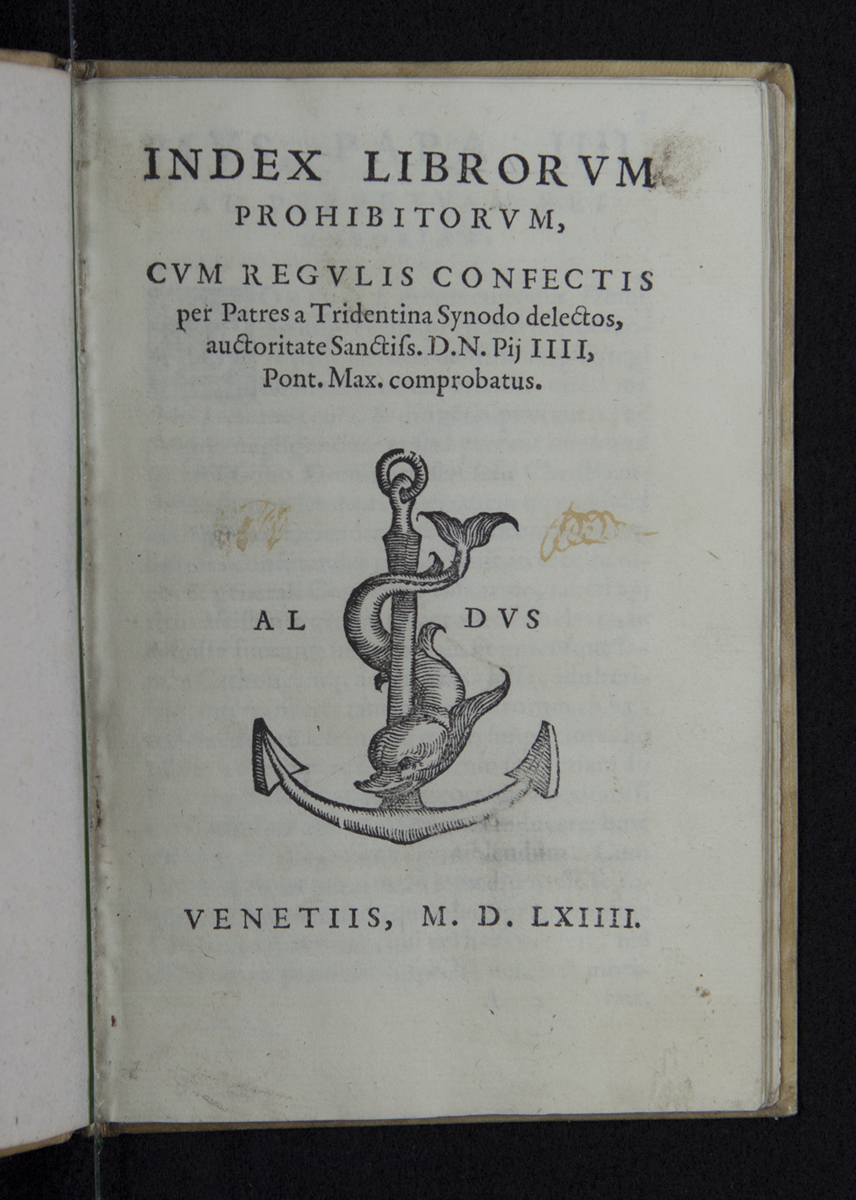
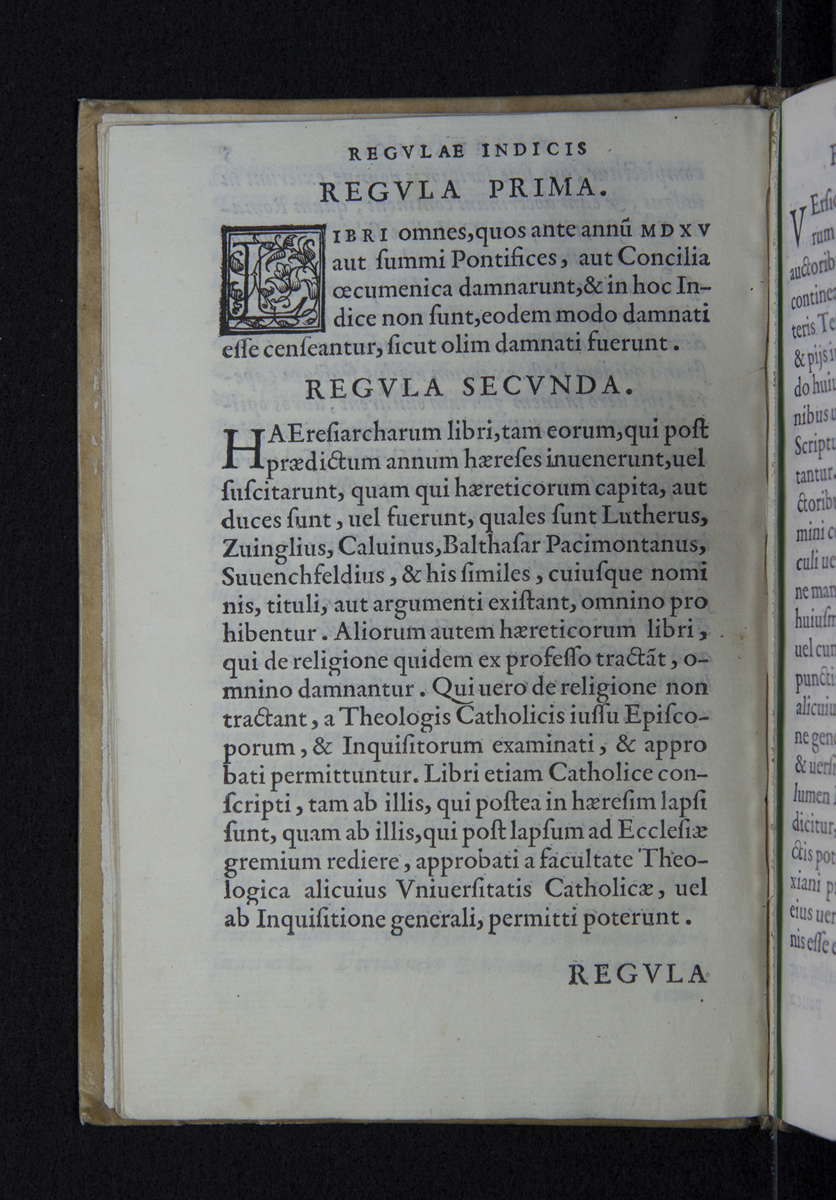
Figure 1. Index Librorum Prohibitorum. Venice: Paolo Manuzio (1564).
Z233.A4 I38 1564b
The Index was published by the Catholic Church between 1559 and 1948 and listed the banned texts deemed heretical or antithetical to Catholic beliefs and the power of the Church. This issue from 1564 includes a series of rules that state the characteristics of a deviant text. ↩
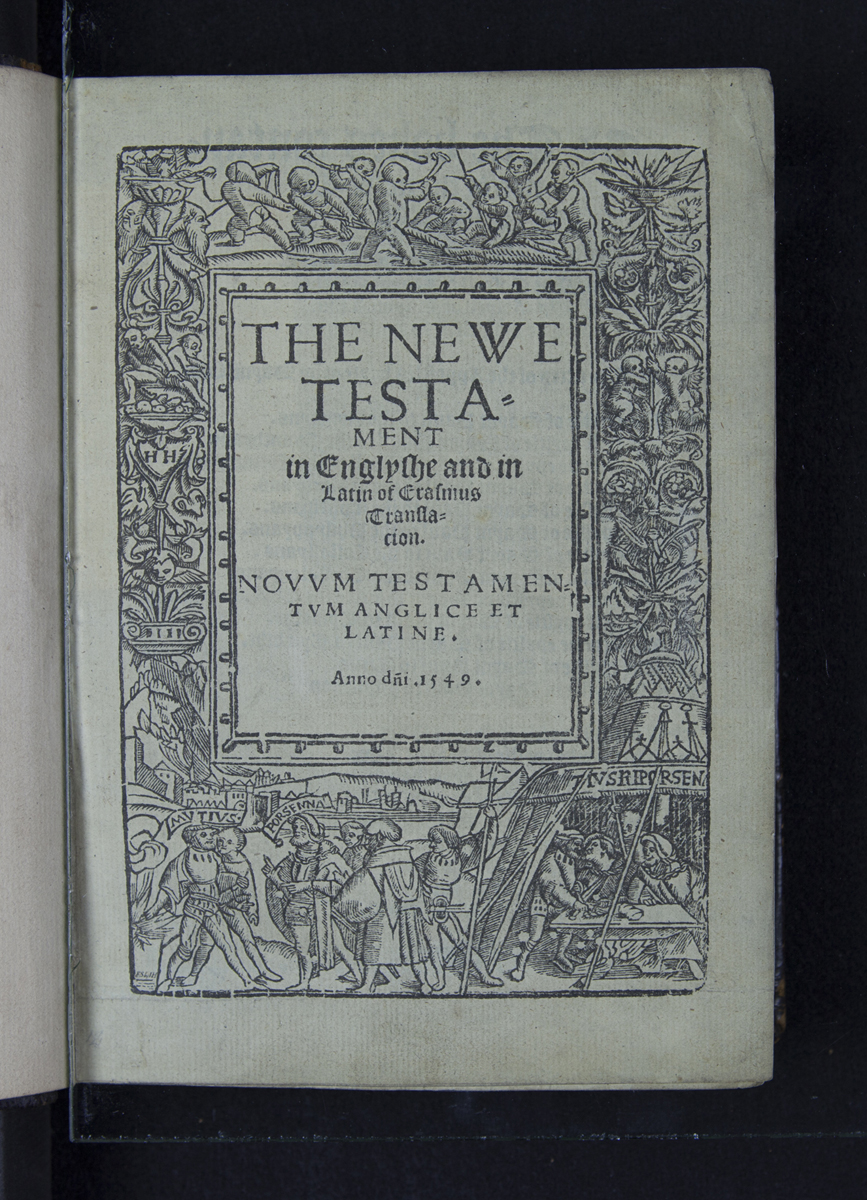
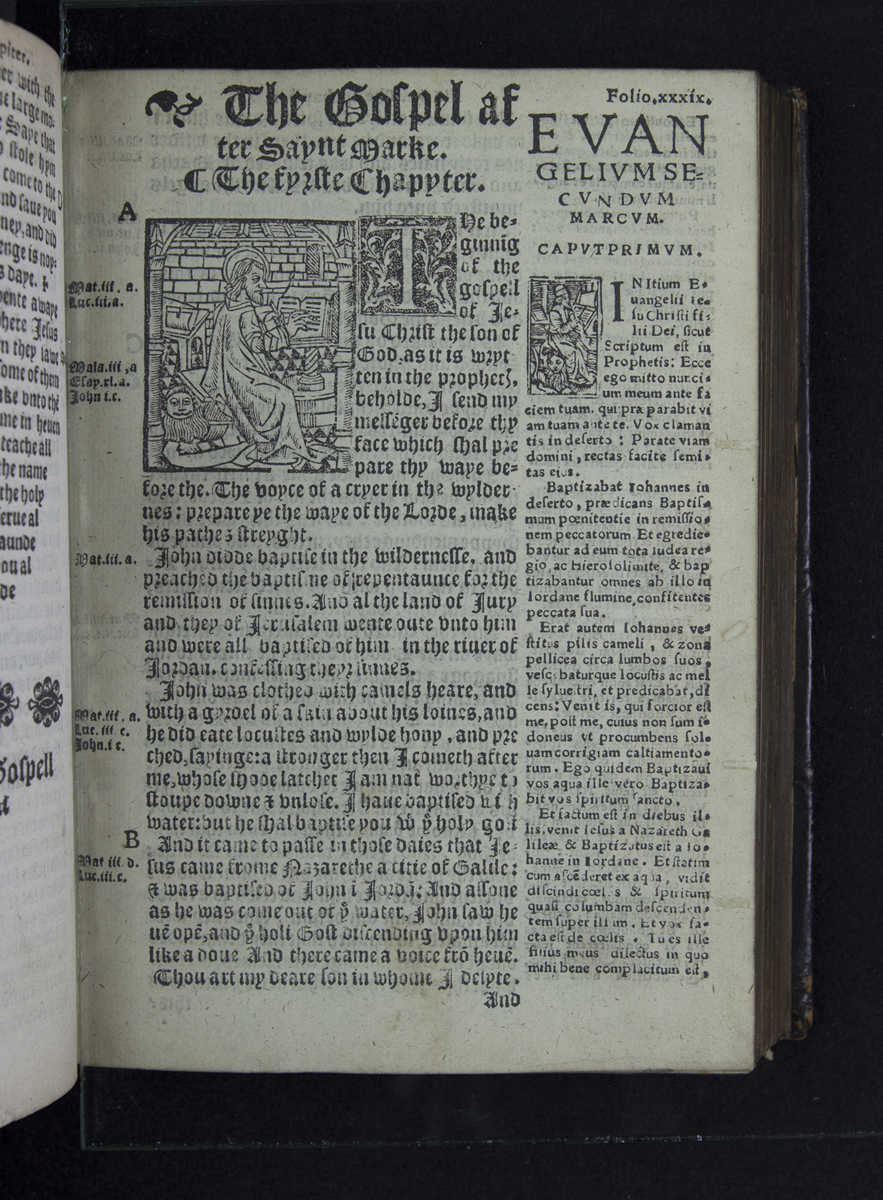
Figure 2. Newe Testament in Englyshe and in Latin of Erasmus translacion. Novvm Testamentvm Anglice et Latine. London: W. Powell (1549).
BS140 1549
William Tyndale’s translation of the New Testament took over a decade to complete and broke the laws prohibiting the translation of biblical works into English. This is a version of Tyndale’s translation. ↩
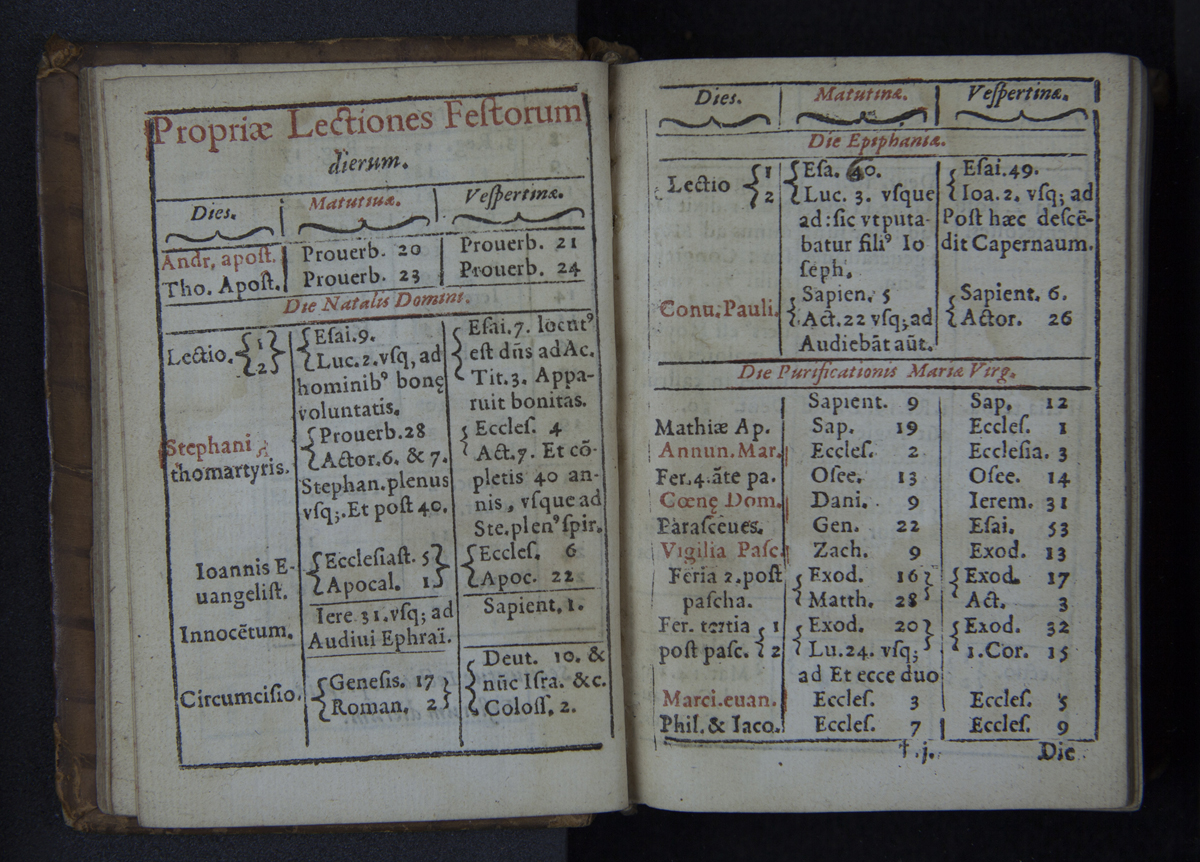
Figure 3. Liber precum publicarum seu ministerij ecclesiasticae administrationis Sacramentorum, aliorumq[ue] rituum & caeremoniarum in Ecclesia Anglicana
(Book of Common Prayer). London: Reginaldum Wolfium (1572).
Min. BX5145.A6 L3 1572
Following Henry VIII’s break with the Catholic Church, the Book of Common Prayer was first published in 1549 to meet the needs of the new Church of England. The Book of Common Prayer includes service information for daily and Sunday worship, as documented in calendars and schedules such as this. ↩
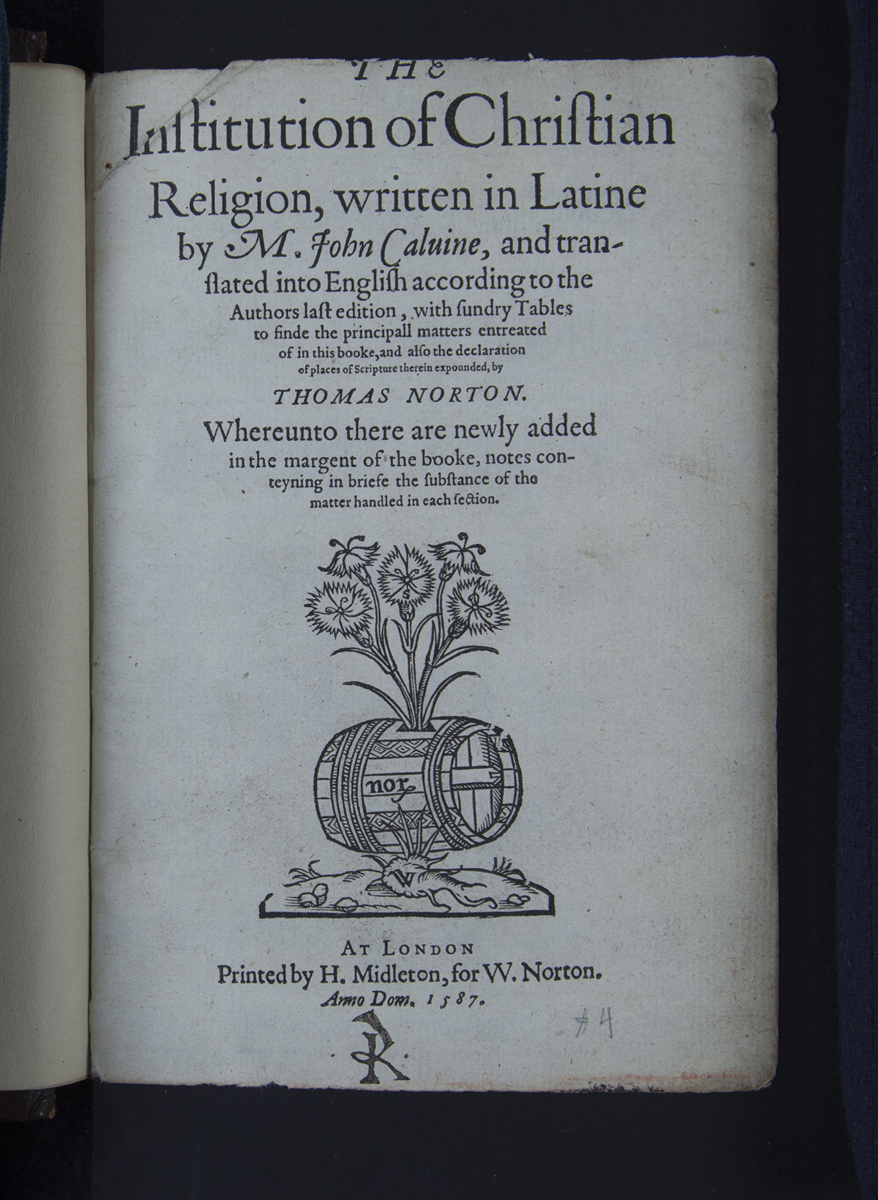
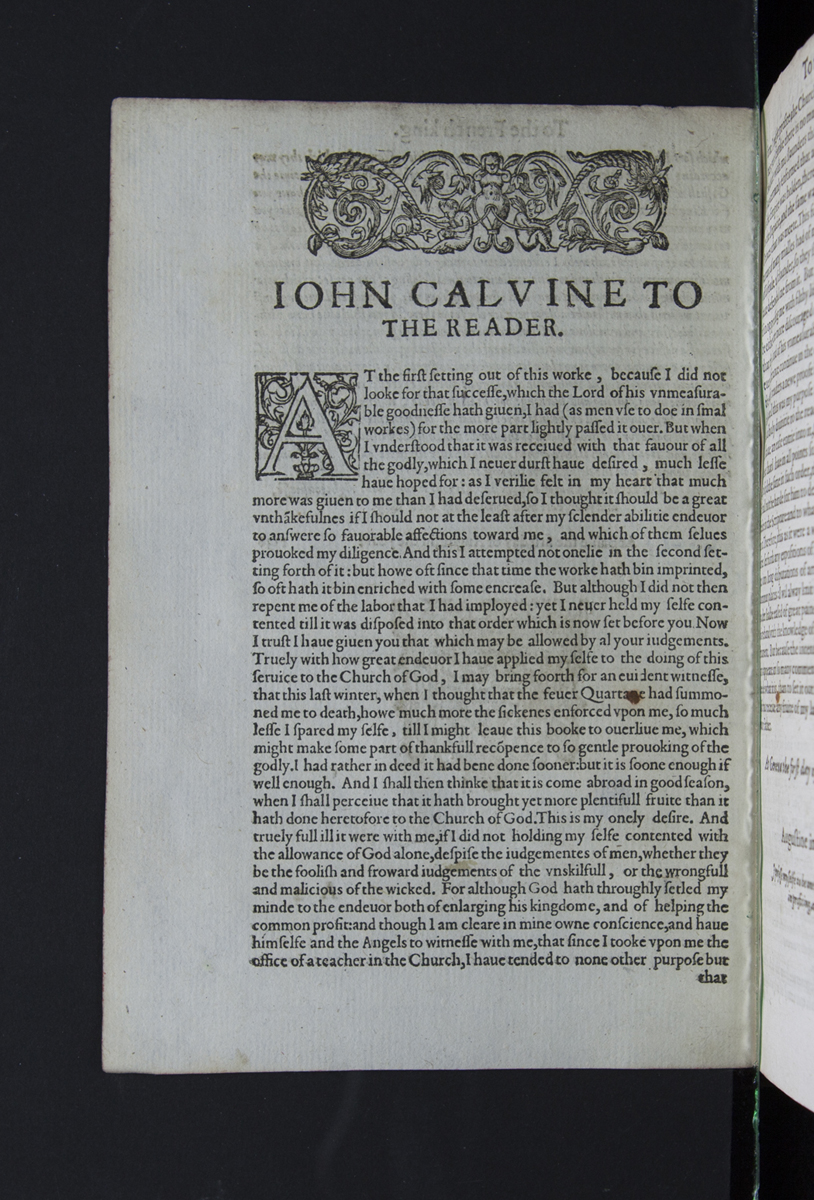
Figure 4. Jean Calvin, Institutio Christianae Religionis (The Institution of Christian Religion). London: Printed by H. Midleton for W. Norton (1587).
[Barcode:G0000534263] BX9420 .I59 1587
The distribution of Luther’s German translation of the Bible in 1522 made the religious text available in the vernacular. Following this monumental publication, Calvin published The Institution of Christian Religion in 1536 and issued the launch of his particular branch of Protestantism. ↩
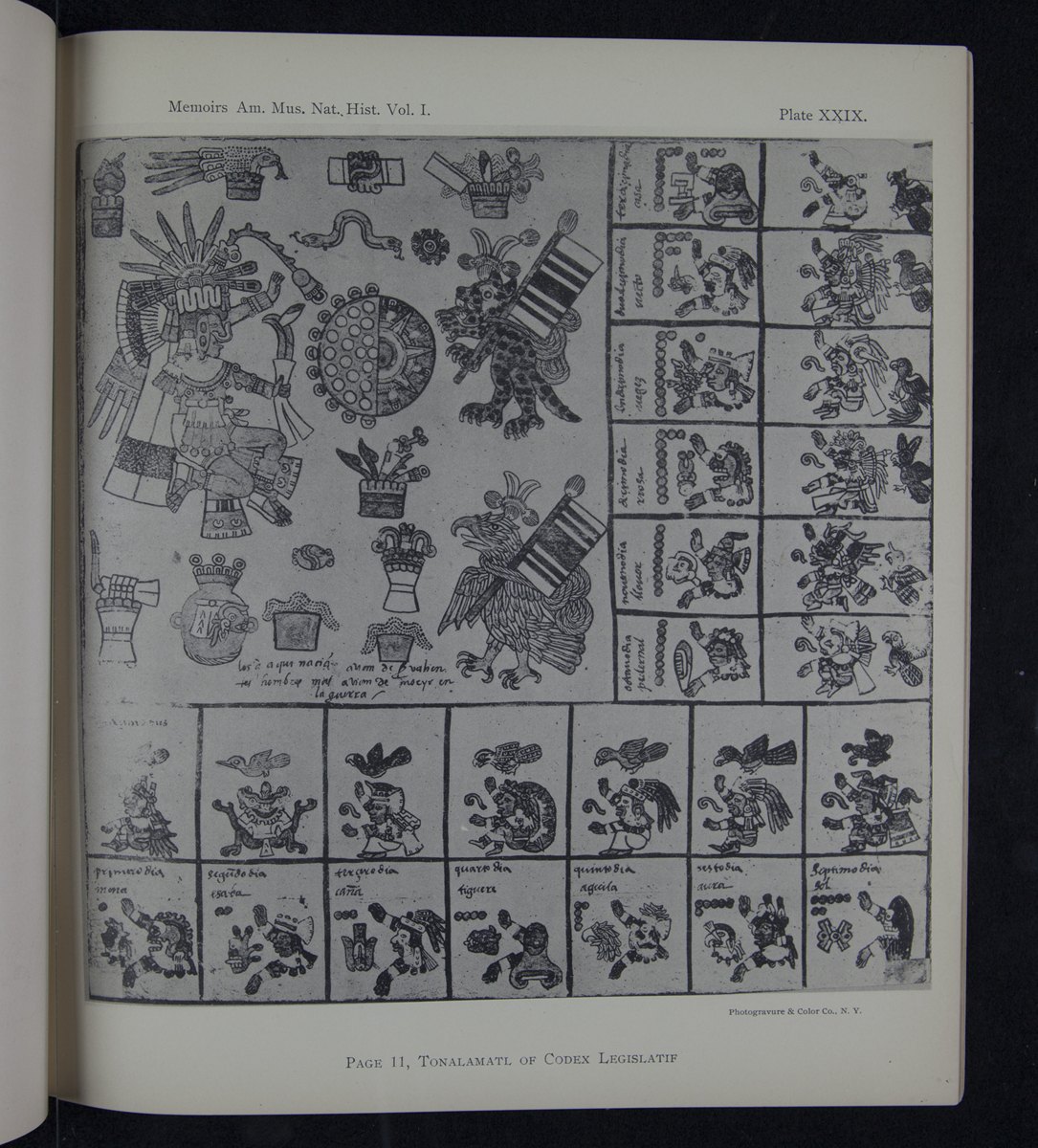
Figure 5. Codex Borbonicus, Bibliothèque de l'Assemblée Nationale, Paris: Vollständige Faksimile-Ausg. des Codex im Originalformat. Graz, Austria: Akadem (1974).
* F1219.3.C2 C6 1974
Although most pre-conquest Mayan books were intentionally destroyed by Bishop Diego de Landa upon Spanish arrival in Mesoamerica, a few texts survive and remain in European collections—such as the Codex Borbonicus, which is currently held by the Bibliothèque de l'Assemblée Nationale in Paris. ↩
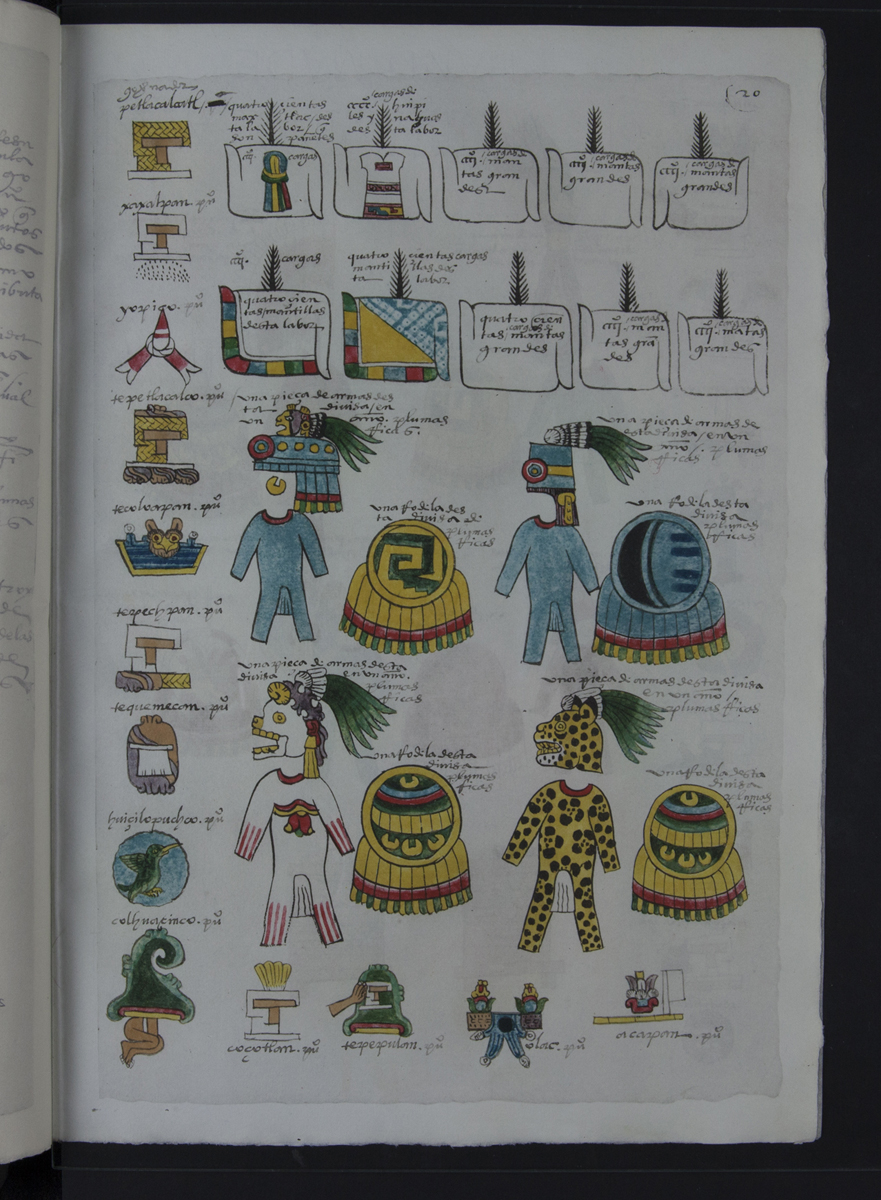
Figure 6. Codex Mendoza, the Mexican manuscript known as the Collection of Mendoza and preserved in the Bodleian library, Oxford. London: Waterlow & Sons, Limited (1938).
* F1219 .C632 1938
Since imperialist conquest resulted in the destruction of most Mayan and Aztec pre-conquest texts, researchers, historians, and all those seeking to understand these cultures must rely largely on sixteenth-century Spanish treatises. One of these texts, the Codex Mendoza was written to inform the King of Spain about the properties of the region and customs of the Aztec people. The text includes numerous colored illustrations of indigenous material culture and ceremonial dress. ↩
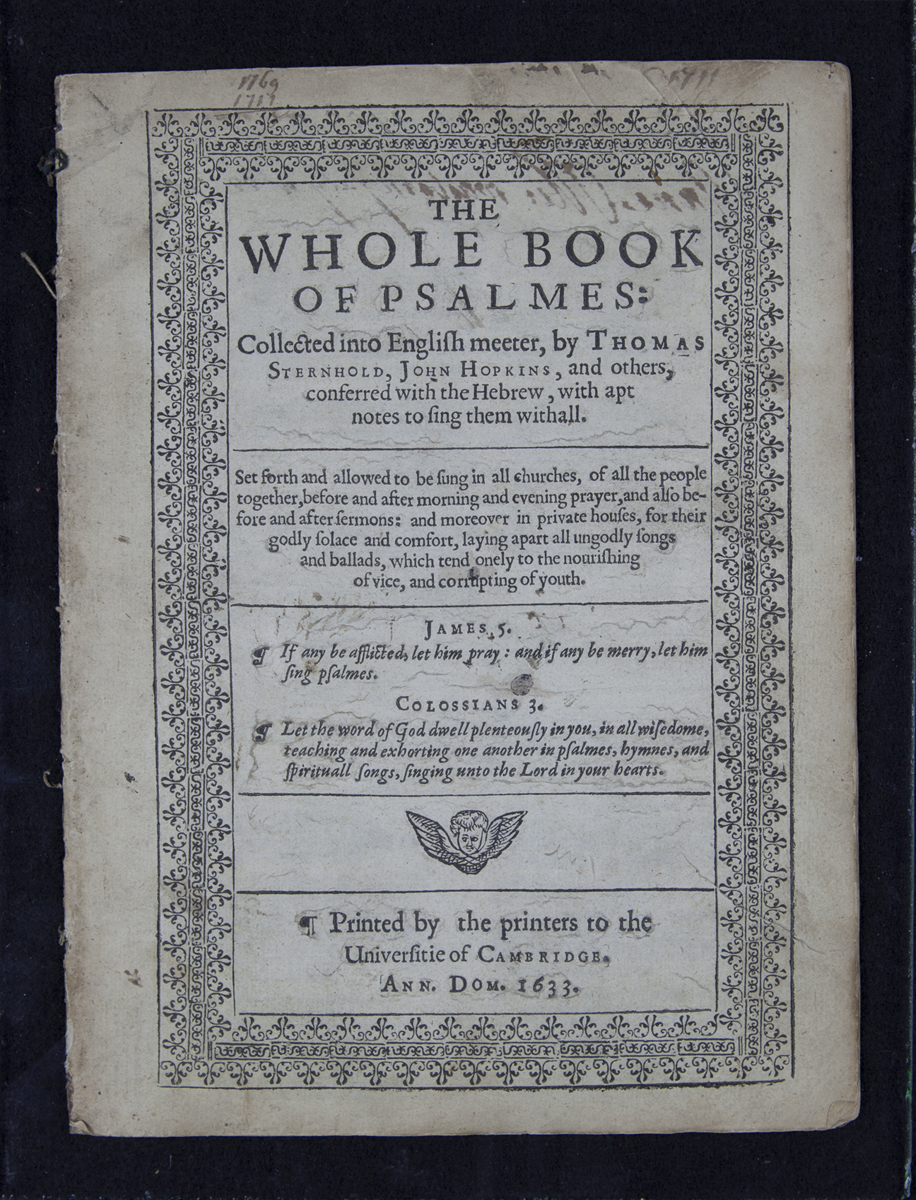
Figure 7. Whole Book of Psalmes. Cambridge: Printers to the University
BS1440 .S8 1635 (1633)
Psalm Books were in common use in the Anglican Church. This particular edition, containing verses rendered into English meter by Thomas Sternhold as well as by John Hopkins and others, was popular among religious communities in the American Colonies, as well as England. ↩
All images are from book in the Charles E. Young Research Library at UCLA, unless otherwise noted.